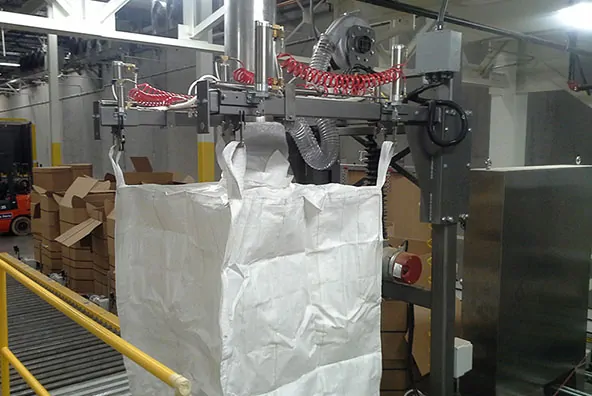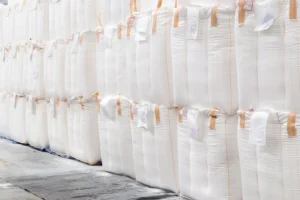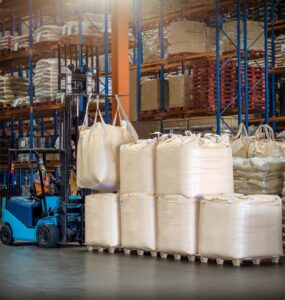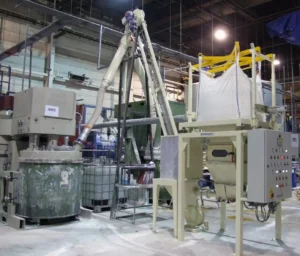When it comes to handling bulk materials, efficiency and precision are what should be your priorities. One crucial decision that businesses face in this realm is choosing between two fundamental methods: bulk bag fillers by weight or volume. So, let’s elevate your bulk material handling to the next level by exploring the merits, drawbacks, and real-world applications of these methods.
The choice between bulk bag fillers by weight or volume depends on your specific needs. Weight-based fillers offer precision for consistent products, while volume-based fillers are quicker for uniform materials. Ultimately, the best method hinges on your material characteristics and operational goals.
Considering Your Application: How Bulk Bags Are Used Across Industries
Bulk bags are used across several different industries. They can typically hold between 1,000 lb (450 kg) and 3,000 lb (1,350 kg). Bulk bags are utilized in all stages of the production process, but most often at the beginning or end of a process. Of course, they’re used to store or transport raw materials. They’re also used to ship the finished product to customers.
The right bulk bag filler can quickly and safely fill a bag without dust escaping. The biggest factor in determining which filler will handle your application at the best price is whether the equipment will fill by weight or volume. However, don’t forget to include the consideration of compatibility with conveyor technologies, as this factor can significantly impact the overall cost-effectiveness of your operation.
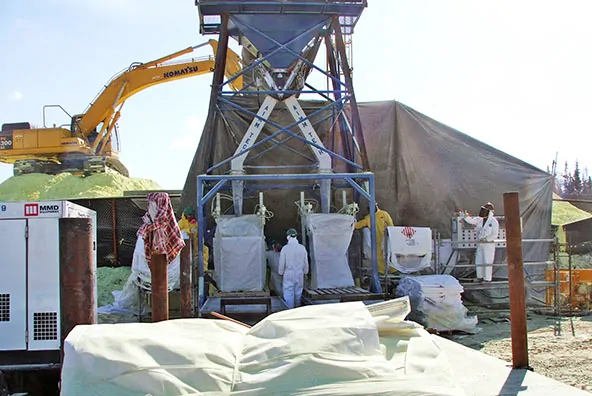
How Is Your Product Sold – Weight-Based vs. Volume-Based Filling for Legal Compliance
Generally, if your product will be sold by weight, you’ll need a bulk bag filler that fills by weight. Countries have different laws and regulations to protect consumers. It’s best to consult with the belt conveyor manufacturers about what additional equipment is required for your country.
For products that are sold by volume, you’ll need a bulk bag filler that fills by volume. These filters are also useful in plants that fill bulk bags with raw or intermediate materials that are stored or moved to another plant. In this scenario, the bags are emptied into an external device such as a bulk bag discharger or a hopper with load cells that measure the material as it’s discharged.
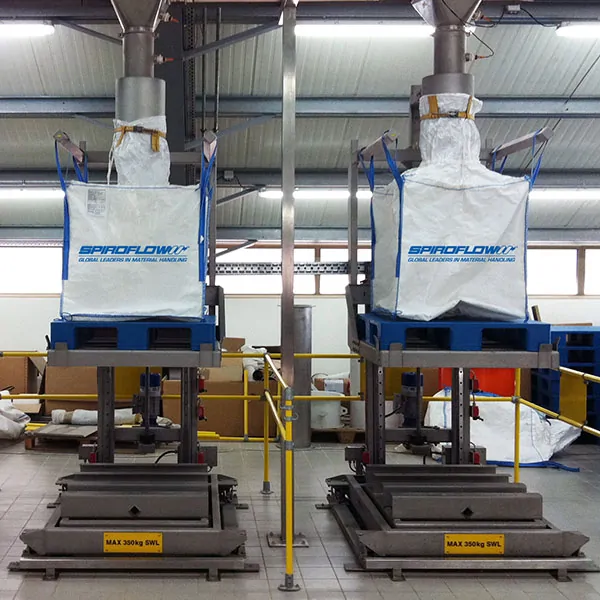
How Do Volumetric Fillers Work?
Volumetric bulk bag fillers consist of a robust bulk bag support frame featuring a filling head positioned at its pinnacle. This frame can serve a dual purpose, supporting the bag on a pallet or suspending it from its lifting loops using lifting arms integrated into the filler.
Positioned above the filler, supply vessels, process vessels, or conveyor belt systems facilitate the controlled discharge of materials into the filling head, ensuring a seamless loading process for the bulk bag. To maintain a dust-free environment during filling, various mechanisms come into play, such as an inflatable neck seal, adjustable clamping strap, or a substantial rubber band securing the bag’s inlet spout snugly around the filling head.
The filling head itself is a critical component, featuring an inner annulus through which materials flow into the bag and an outer annulus responsible for releasing the air displaced by the incoming material. For applications involving dusty materials, the outer annulus channels the displaced air to a dedicated dust collection system, effectively capturing and cleaning the air before safely exhausting it into the atmosphere.
Optimizing Fill Efficiency: The Role of Bag Inflation and Filler Operation
An optional operated blower on the bulk bag filler frame provides airflow for inflating the empty bulk bag before it’s filled. Inflating the bag ensures that it’s correctly formed to accept your material, allowing the bag to be filled evenly and to its maximum capacity. Bag inflation also eliminates fabric creases that could hinder the bag’s complete filling. The filler frame can be designed to handle your plant’s headroom limitations and, depending on the model, can be adjusted manually or automatically to adjust to bulk bag height variations.
The filler can be operated manually or automatically once the bulk bag is loaded onto the filler and inflated. In manual operation, an operator typically opens the supply or process vessel’s outlet valve (starts the conveyor) and closes the valve (stops the conveyor) when the material reaches a certain level in the bag or completely fills it.
Precision Control: How Level Sensors Ensure Accurate Filling
The level sensor is located in the supply or process vessel at the point where the material level equals the correct bulk bag volume. When the material loaded into the vessel reaches this volume, the level sensor signals the vessel’s outlet valve to open, discharging the vessel’s entire contents through the filling head into the bag. You can also use a level sensor to stop the material loading into the supply or process vessel and discharge the vessel’s contents to the bag.
The sensor is suspended from the filling head and positioned to detect the point in the bulk bag where the material will reach the required volume. This detects when the material filling the bag reaches this point and signals the supply or process vessel’s outlet valve to close or the conveyor belt solutions to stop.
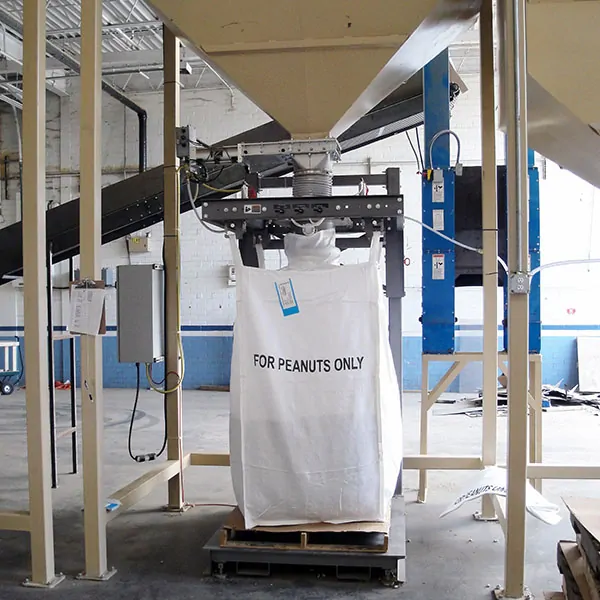
Enhancing Bag Stability: De-aeration and Compaction Options for Different Materials
Depending on your material’s characteristics, the filler can be equipped with an electrically or pneumatically operated vibration device. It will de-aerate and compact the material as it fills the bulk bag and after the filling is complete. This ensures that the bulk bag has a stable shape for safe handling, storage, and transportation.
Materials that are easily fluidized, like flour and carbon black, require vibration for compaction, while non-fluidizable materials, such as coarse sand and plastic granules, do not. For highly aerated materials, users may opt for a more substantial bulk bag filler design that is specifically designed to provide more robust densification.
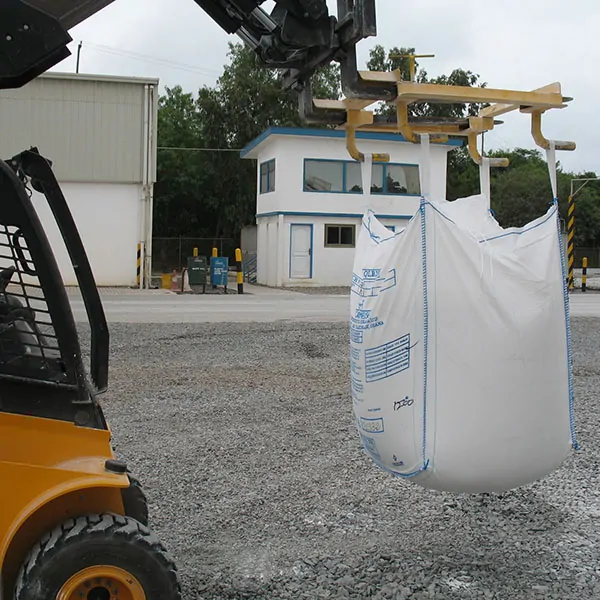
How Do Gravimetric Fillers Work?
These fillers are filled by weight. They consist of a bulk bag support frame, a filling head, an electronic scale with load cells, and a control panel. The filling head is the same as that for a volumetric filler and can be held tightly on the bag inlet spout by the same devices. As with the volumetric filler, a supply or process vessel or supply material to the gravimetric filler and a blower on the filler frame provide bag inflation.
The filler can be equipped with a vibration device to de-aerate and compact the material as it fills the bulk bag, and the frame can be designed to handle your bulk bag height and headroom limitations.
Configuring Filler Frames and Scales: Platform-Weighing vs. Hang-Weighing Designs
The filler frame and scale can be configured in different ways. The filler can have a platform-weighing design in which the load cells are under a platform that supports the bag on its pallet. Alternatively, a filler can have a hang-weighing design, in which the load cells suspend the lifting arms holding the bulk bag.
In a filler with a platform-weighing design, the weighing platform is usually load-cell mounted and an integral part of the filler. In some cases, the filler manufacturer incorporates a proprietary platform scale into the filler. The scale in any platform-weighing or hang-weighing filler requires appropriate weighing equipment to meet national standards.
After the operator loads the bulk bag on the gravimetric filler, it inflates the bag and uses the scale’s control panel to start the filling process. The scale senses the weight of material in the bulk bag as it fills and automatically sends output signals to the supply or process vessel’s outlet valve to close or to the conveyor controls to stop the conveyor belts.
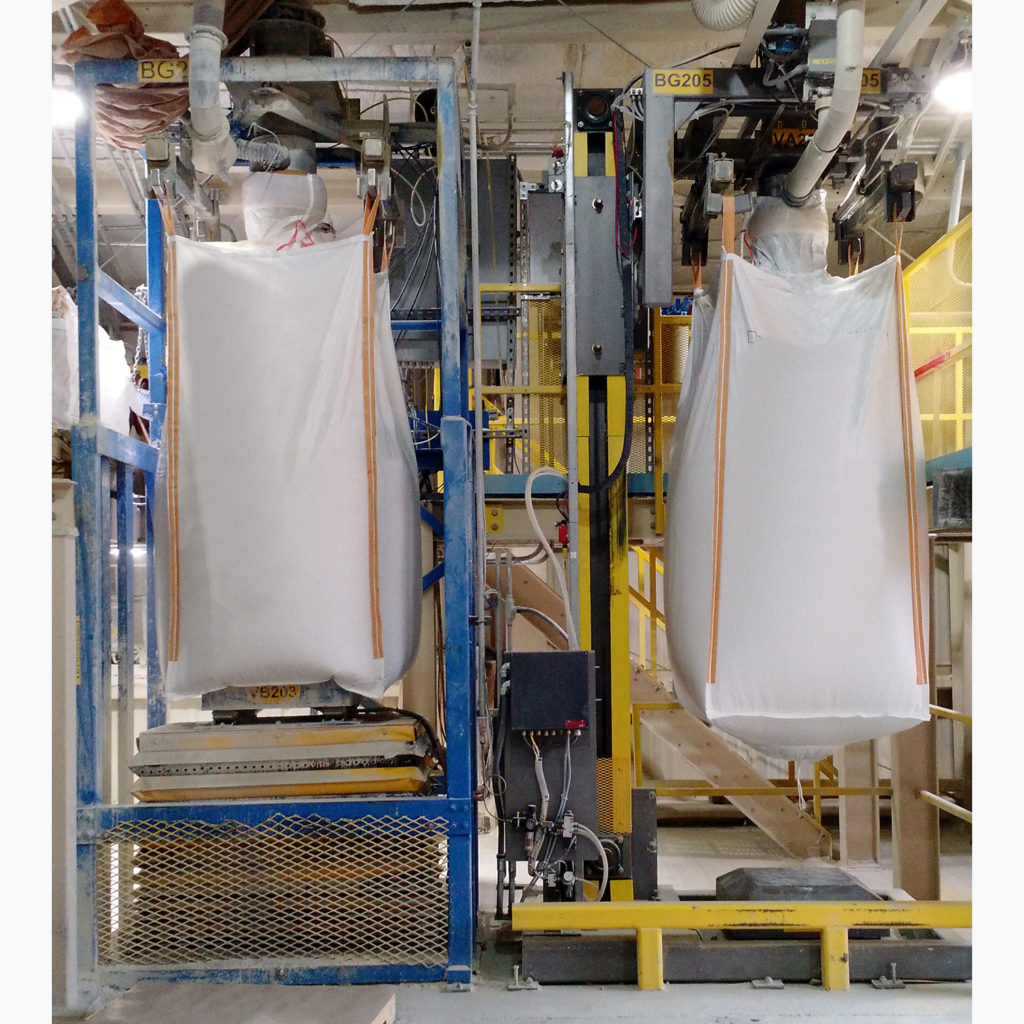
Precision Advantage: The Impact of Weight Measurement in Hang-Weighing Fillers
When selecting a platform-weighing or hang-weighing gravimetric filler, be aware that the hang-weighing filler offers two advantages. The major advantage has to do with how much weight the suspended scale must measure. Both platform-weighing and hang-weighing scales must be torn (zeroed out) between weighments to ensure that only the bulk bag’s contents are weighed.
But when the bag and its contents, the pallet, and the platform support structure under the pallet rest on load cells, as in the platform-weighing filler, the scale must weigh all of these items, and the support structure is often particularly heavy.
When the load cells suspend the lifting arms holding the bag’s lifting loops, as in the hang-weighing system, the scale weighs only the lifting arms, the bag, and its contents. This requires weighing and tearing less metal in relation to the bag’s contents, so the suspended scale can provide greater accuracy.
Built-in Protection: Safeguarding Load Cells in Hang-Weighing Fillers
The second advantage of hang-weighing filler is that the suspended scale’s load cells are mounted high up in the filler frame, protecting them from potential forklift damage. When the platform in a platform-weighing filler is hit hard by a forklift, the resulting lateral forces can damage the load cells. While the load cells can be protected by installing a strong buffer that can stop the forklift before it hits the platform, a hang-weighing filler’s load cells are intrinsically protected from forklift damage.
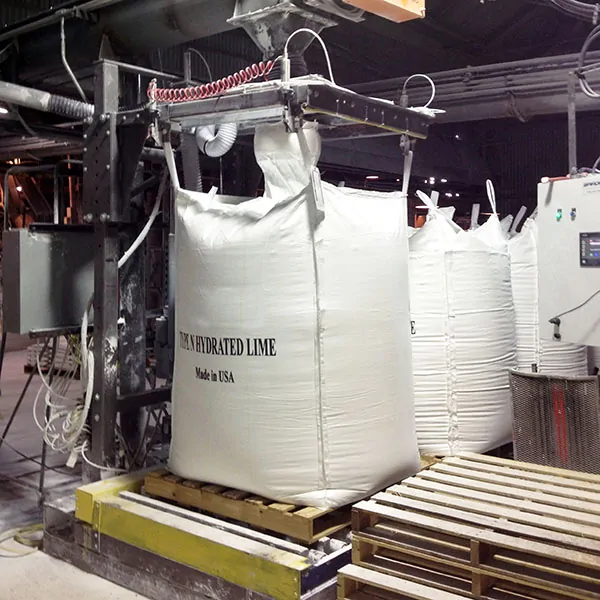
Choosing the Right Supplier: Key Considerations for Your Bulk Bag Filling Equipment and Conveyor Solutions
Choosing the right conveyor belt system supplier is an important part of this process. A reputable supplier will make sure you’re getting the equipment that fits your needs at a reasonable price. Ask if the supplier can provide case studies or if they have patented designs that prove their expertise in the industry. You should also ask about a material test, as this is the best way to ensure your product will run in your application as expected.
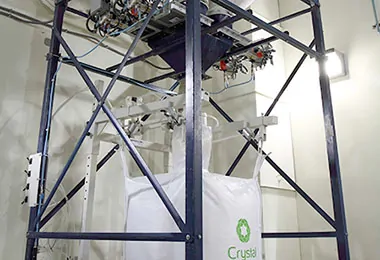
Bulk Bag Fillers by Weight or Volume – Ask Spiroflow, One of the Best Industrial Conveyor Systems Manufacturers
The choice between weight or volume-based systems is a critical decision that impacts efficiency, accuracy, and productivity. At Spiroflow, we understand the complexities of this choice, and our commitment to excellence in industrial conveyor systems is unwavering.
Whether it’s a belt conveyor system or a flexible screw conveyor, we’ve equipped countless businesses with solutions that have optimized their operations. Now, it’s your turn to take the next step toward success. Contact us today to explore the ideal bulk bag-filling solution for your needs, and let Spiroflow empower your business with the best systems in the industry.

